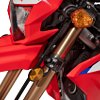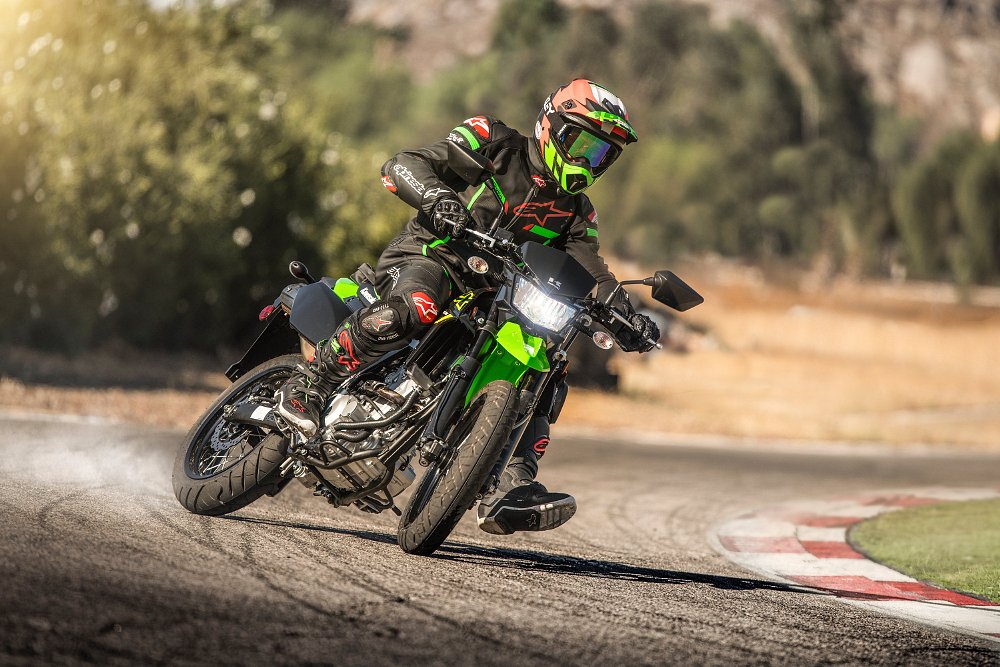The long-awaited replacements for Honda's CRF250L dual-sport and CRF250L Rally mini-adventurer are finally here for some markets.
The CRF250L and CRF250L Rally were never meant to win races or dominate spec-sheet shootouts. They offered friendly fun with docile power and handling. Enthusiasts quickly realized that the Honda 250s were versatile and easy to live with. Bolt on some upgrades, and they could even hang with some serious dual-sport bikes.
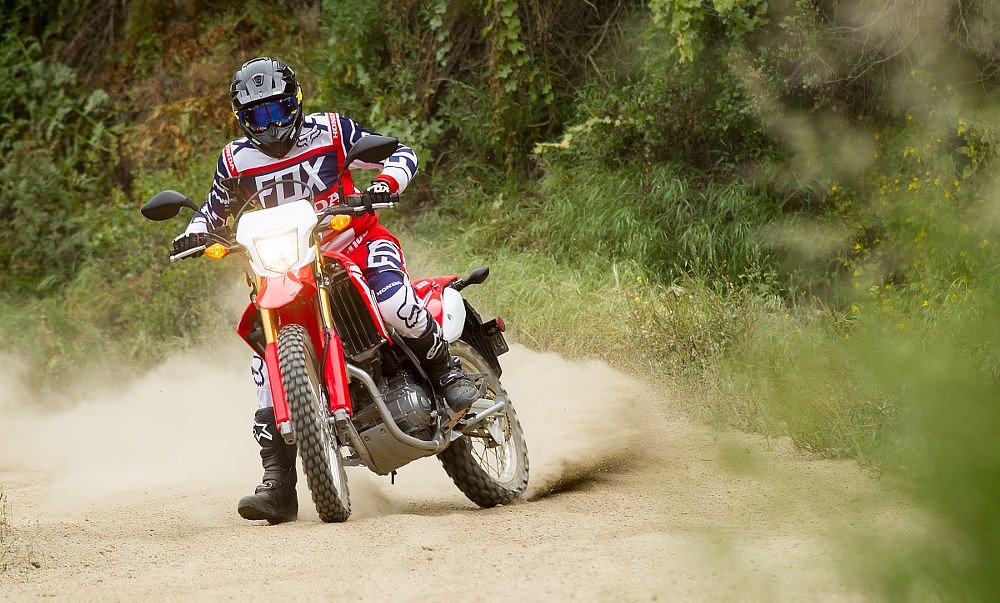
That said, countless riders have asked for a 300 version using the engine from the CB300R or Rebel 300 for just a bit more power. The aftermarket even developed stroker and big bore kits for the DIY crowd. At this point, wishing for a CRF300L on an ADV forum is like asking the band to play Freebird at your local open mic night.
I suspect Honda listened to both their fans and emissions regulations agencies when building the new 300s, and these bikes seem likely to keep everyone happy for a few years with more power to satisfy the fans and better emissions to satisfy governing bodies around the world.
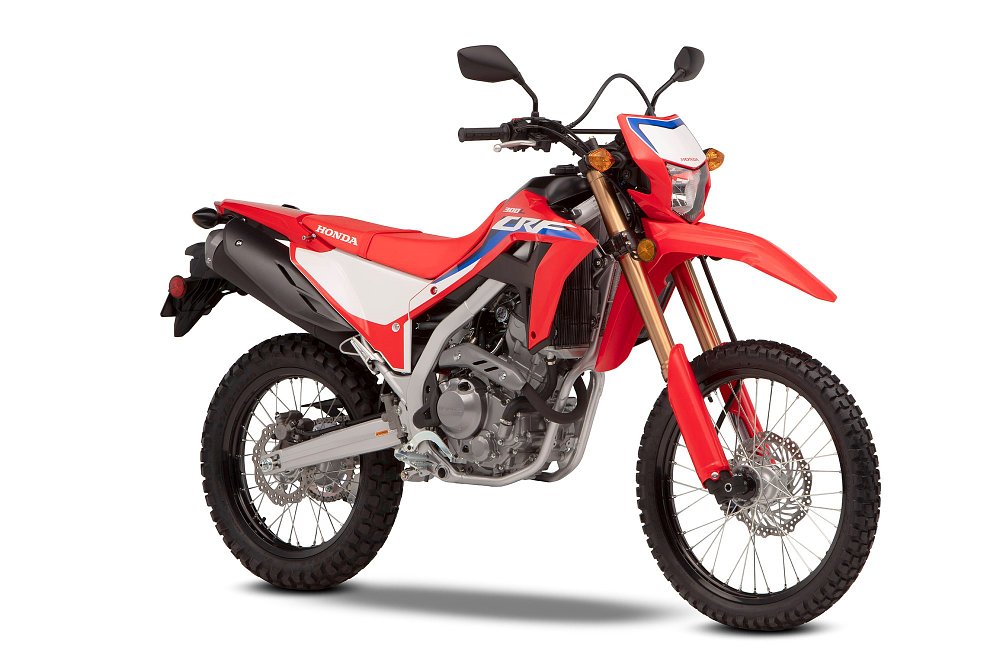
Updates and changes
The big news, of course, is that all-important displacement bump. The 76 mm bore of the old model is retained, and with eight mm more stroke, Honda’s single is now 286 cc, just like the other Honda 300s. Spec sheets from other markets say it’s good for 27 horsepower at 8,500 rpm; torque’s up 20 percent to 19.6 foot-pounds at 6,500 rpm. The engine appears to use the same basic architecture as before, although the many small changes mean that they are not exactly the same.
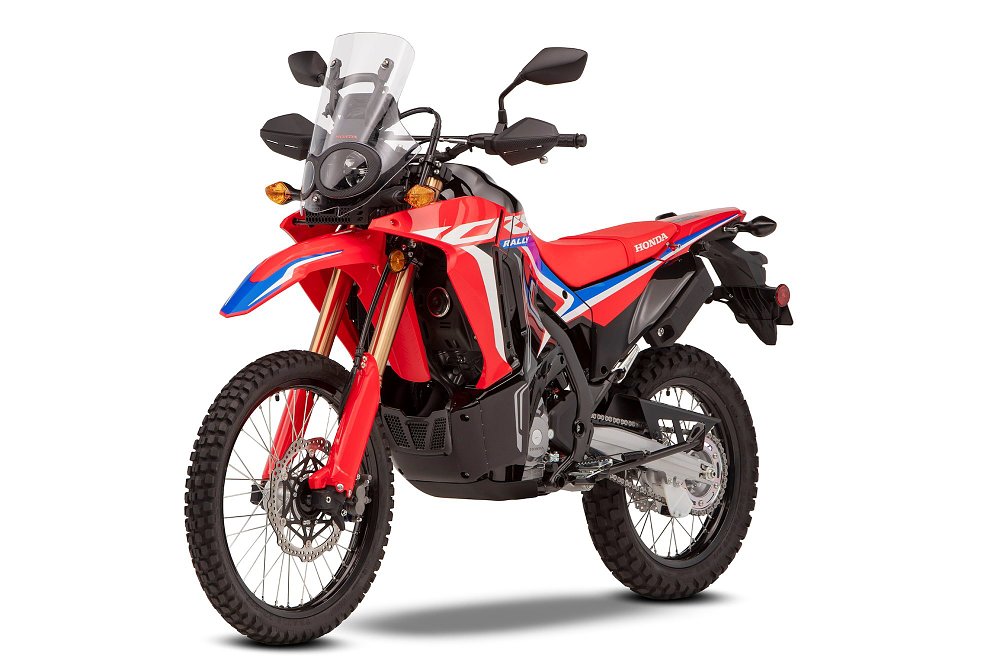
Honda claims the lighter, flexier frame cuts weight and improves traction. "The steel semi-double cradle frame is completely new and contributes [4.7 pounds] to the weight loss," says Honda's UK office. "Just as importantly, to promote handling feel and connection to front/rear traction, its flexibility balance has been tuned with 25 percent less lateral rigidity. This has been achieved with decreased width for the main down tube and smaller diameter lower down tubes plus a 0.79 inch decrease in width across the central bracing tube." Ground clearance is increased by 1.2 inches on the Rally and a mere 0.2 inches on the CRF-L.
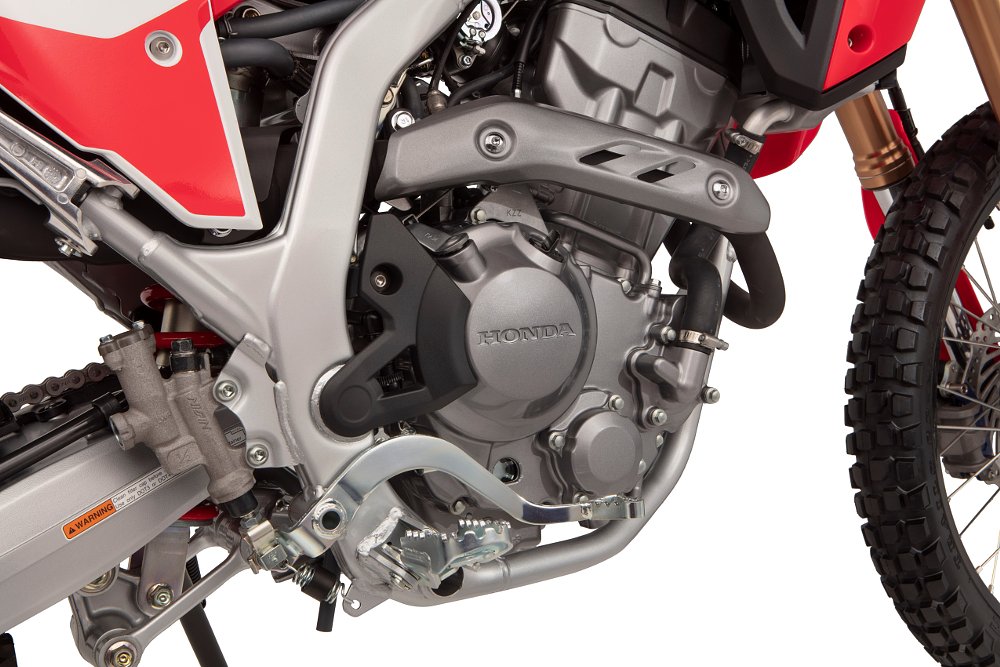
Other changes to the CRF-L and Rally include updated ignition timing, a slipper clutch, longer-travel suspension, and new gear ratios that are closer down low with a revised top gear for better highway manners. The Rally also gets a larger tank, a slightly different seat, and some anti-vibration updates.
Tell us the weight, cries every diehard dual-sporter and ADVer. The CRF300L rings in at 313 pounds wet; the Rally’s 337 pounds. Kawasaki’s new KLX300 has a curb weight of 302 pounds, for reference.

Speaking of that Kawi, these two Hondas continue the year’s trend of displacement creep as manufacturers revise their model lines for EURO 5 and other emissions standards. The days of the 250 dual-sport may very well be ending. Or maybe they’re already over. Honda and Kawasaki seem to be embracing 300 cc platforms, Yamaha just discontinued the WR250R, Suzuki hasn’t offered a 250 dual-sport in ages, and KTM/Husqvarna’s quarter-liters are more race bike than dual-sport, so I hesitate to compare them.
Will the U.S. get these motorcycles?
I'd be very surprised if Honda didn't send the CRF300L and CRF300L Rally to the United States for 2021. I reached out to American Honda, and while they would not say anything about future U.S. availability, they said, "The CRF250L and Rally have been very important models for American Honda... [we'll] continue to evolve that model for the U.S. customer." Head over to Honda's pages for the CRF250L and CRF250L Rally, and you'll notice that they only go up to MY2020. Meanwhile, models like the Africa Twin show MY2021. Hmm...
We'll be sure to keep our eyes peeled for any more news from Big Red. To those of you outside the U.S. market, enjoy your new CRF300L and CRF300L Rally.








